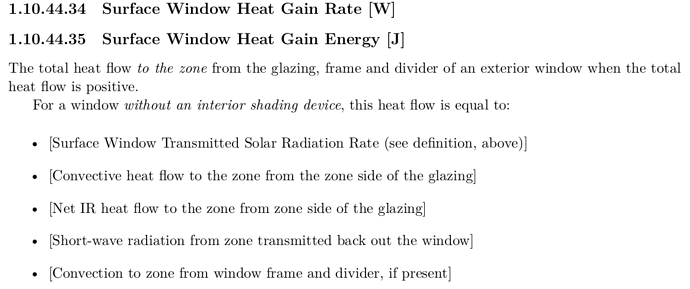This is an interesting thread. I just realize that Honeybee has glazing conduction output. This is certainly not an EnergyPlus output.
@chris Could you elaborate how Honeybee calculates the glazing conduction? A pointer to the source code would suffice.
@mikeheiss There are a number of factors that lead to the result you showed.
-
You are using the simplified window definition (i.e. specifying only U-value and SHGC). When this is used, EnergyPlus will create a full definition of the window, i.e. with spectral average. The resulted spectral model is reported in the EIO file. However, as the manual warns, if you plug in the spectral model into the window definition, you might get a different result, compared to the one using simplified window definition. A better approach is to find a real glass in LBNL Window program that closely represents the U-value and SHGC you want.
-
The combination of U-value and SHGC might not be realistic. You changed the U-value and not the SHGC. This may or may not be realistic. Remember that EnergyPlus will create a spectral average from the simplified window definition.
-
EnergyPlus does not report conduction, simply because the zone cannot “see” the conduction. All the zone can see is the convection from the wall to the air. That’s it. More conduction will be felt as more convection by the zone. That is how EnergyPlus is designed. I found it interesting that Honeybee does report the conduction. I am wondering how is the conduction value isolated.
-
If you want to see the effect of glass conduction, you should test when there is no solar radiation. Disable the heating and cooling during the day, and set it on during the night. The difference in the total energy for heating and cooling is caused by window conduction. The combined effect of radiation, convection, conduction and absorption is a lot more complex than a simple comparison like you did.
-
Finally, you should check the EnergyPlus manual. Here is an example, note there is no conduction.
Cheers.
